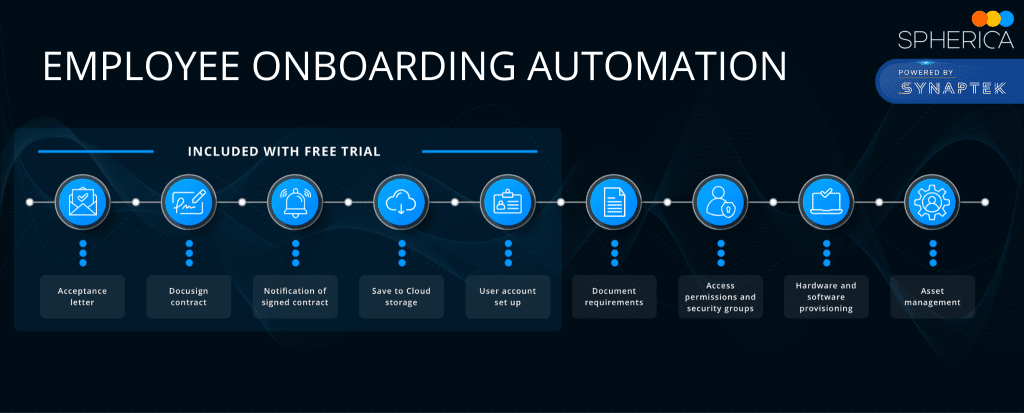How IT automation can help HR departments amid The Great Resignation
“We have an opportunity to leverage technology to improve every facet of the work experience. The best-designed technology (think artificial intelligence) helps people be more human, and organisations will need to get serious about total experience: the combination of interactions, aptitudes, and value creation and delivery that are at the core of work. Employees Increasingly Seek Value and Purpose at Work.”
Chris Howard | Gartner Chief of Research
Why are we amidst ‘The Great Resignation’?
Post-pandemic, there’s been a seismic shift of values within the workplace amongst employees who are now expecting a people-first ethos and humanised value propositions. Flexibility, work-life balance and hybrid working became the norm during the year of lockdown, driving many to re-evaluate priorities and redefine their ideal future of work, which is being coined as, ‘The Great Reflection’.
Since this, numerous polls have revealed that the majority of workers favour hybrid and flexible working environments. A Gartner report, revealed that ‘If required to work fully on-site, 43% of employees and 47% of knowledge workers say they would seek other jobs’. It also revealed that 60% of HR Leaders are significantly concerned about employee turnover within their workplace, making it evident that employee attrition rates are a concern among many organisations.
With employee retention proving an issue in the post-pandemic world, HR departments are bearing the brunt of employee lifecycle processes, from finding ideal candidates, to onboarding new recruits, to dealing with secondments, to offboarding exiting employees.
Not only that, but It’s becoming a challenge to find new recruits, with the amount of vacancies available. It’s reported that 49% of job candidates who have received a job offer are considering at least two others at the same time, emphasising the need to attract, retain and engage.
How can IT automation revolutionise employee lifecycle management?
With the aforementioned being just some of the challenges that HR departments are facing, how can IT automation help to alleviate some of this high-staff turnover pressure in the new future of work and help to engage new recruits from the get-go?
Employee onboarding is a vital HR process, but it has many manual touchpoints. Information passes between multiple departments – from HR to IT to facilities – to ensure a new hire has everything they need to get to work on their first day.
The admin burden is significant, and tasks are usually repetitive and mundane. IT Service Desk teams bear the brunt of these tasks, such as:
– User account set up
– Access permissions and security groups
– Hardware and software provisioning
– Asset management
The same is true for offboarding employees when they leave the business. Decommissioning accounts, removing access permissions, and managing redundant assets is another highly manual process. The risk of error in this case can expose businesses to security risks if permissions are not removed promptly. While redundant software licences can lead to unnecessary costs.
Intelligent automation connects people, processes and technology to reduce the heavy admin burden and:
– Improve the employee experience
– Reduce risk
– Increase security
– Increase productivity
– Reduce costs
Transforming employee lifecycle management
Different organisations will have varying routines and procedures for each of their lifecycle stages, but implementing automated workflows, bespoke to existing processes, simplifies these. After identifying each stage, the automation will seamlessly trigger the first task to commence and pass over to the next upon completion.
By removing fractured communication and approval processes, intelligent automation enables tasks to be completed with far fewer human touchpoints. Here are just some of the benefits that can be delivered:
– New hire data is automatically populated across various platforms, reducing the risk of manual keying errors
– Access permissions are triggered based on department and job role rules, reducing the risk of misallocation or delayed access
– Asset management is enhanced as information is accurate and up to date
– Employee communications are automated, increasing consistency and accuracy
– Service desk tickets are automatically updated and closed without requiring human input
– Risk of error is reduced, protecting a business’s most valuable assets: its people and its data.
One of our customers who was managing 100+ employee lifecycle requests a month, in fact managed to save 40 hours a month through automating their ‘Joiners, Leavers and Movers’ processes. The automation provided their IT and HR teams more time to focus on other more valuable tasks and provide other service improvements, read more here.
When and how to start?
A recent Gartner stat cites that “48% of chief human resource officers stated that their current HR technology solutions hinder, rather than improve.” Technology is essential in aiding HR departments to evolve and overcome common pain-points, but first, process inefficiencies need to be identified in order to find a solution to fix the problem, not simply automate the inefficiency.
With research showing that the pandemic has caused a great resignation due to changing attitudes and values, employee lifecycle processes are increasingly becoming a concern for HR leaders. Automating these tasks is a good place to start, but it’s understandable that organisations delay investment due to a fear of getting their strategy wrong.
That’s why we’re offering a free Proof of Value of our onboarding package to demonstrate the benefits that automation can bring to your business, users and new hires, before investing in the solution… And automations can be in place in as little as just two weeks!
Find out more about our 30-day free trial bespoke to your business.



















